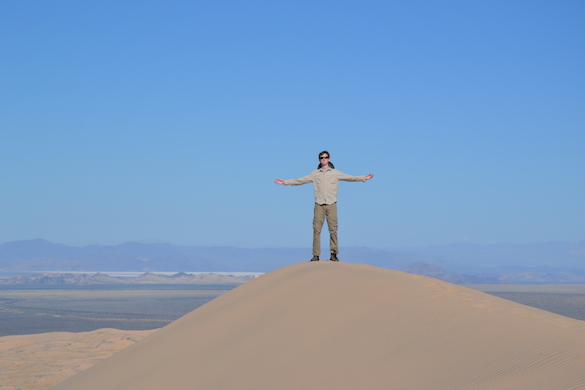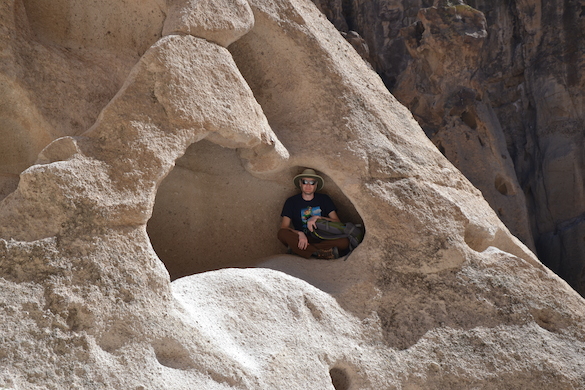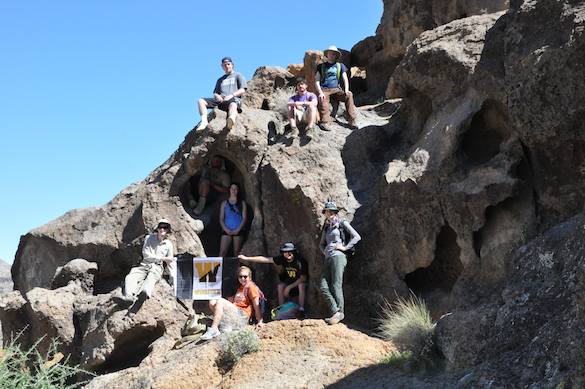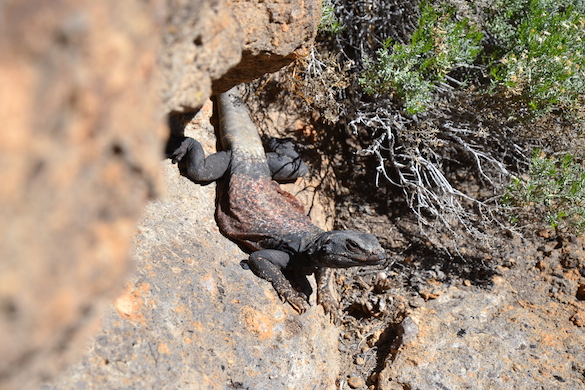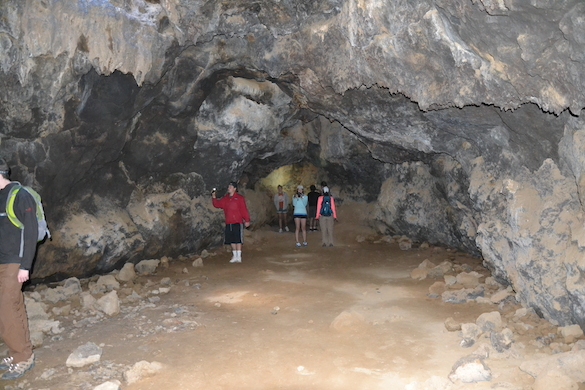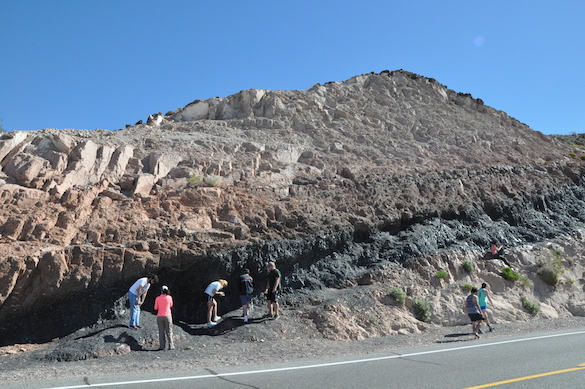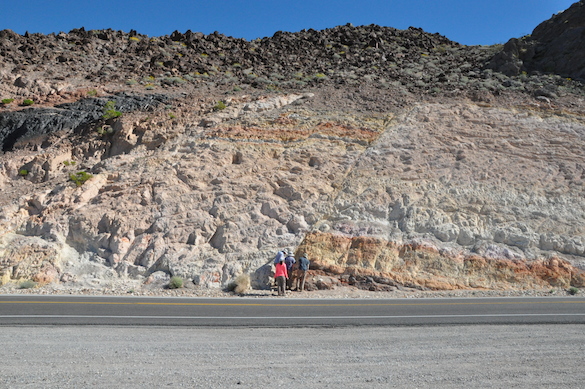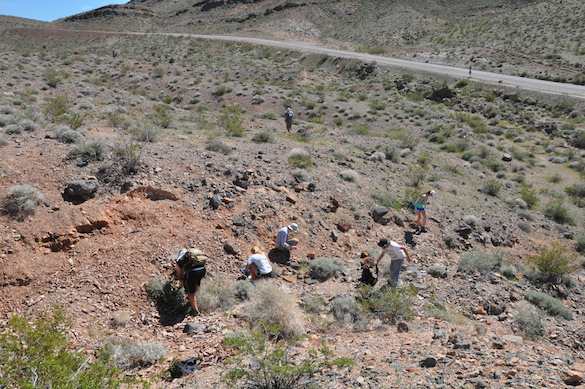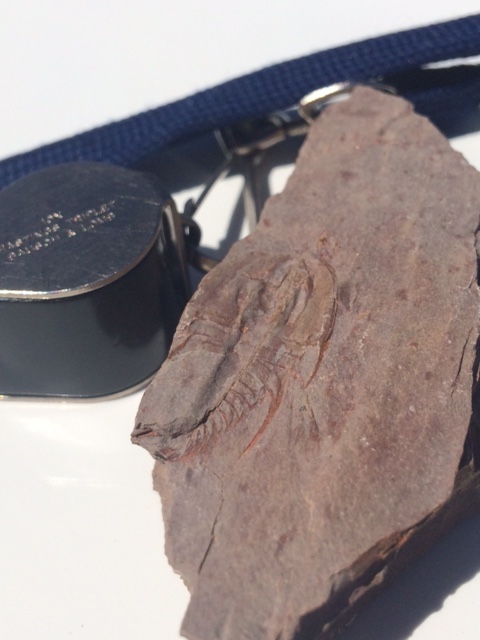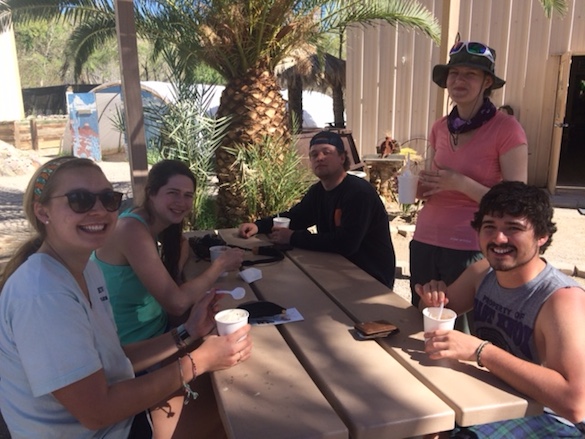 This week’s fossil is in honor of Annette Hilton (’17), who is my Sophomore Research Assistant this year. She has been diligently working through a large and difficult collection of scleractinian corals from the Matmor Formation (Middle Jurassic, Callovian) of Hamakhtesh Hagadol, Israel. These specimens were collected as parts of many paleoecological studies in our Wooster paleontology lab, so I thought it was time they received some systematic attention on their own. I knew it would be difficult, but Annette was up to the task and has done a splendid job.
This week’s fossil is in honor of Annette Hilton (’17), who is my Sophomore Research Assistant this year. She has been diligently working through a large and difficult collection of scleractinian corals from the Matmor Formation (Middle Jurassic, Callovian) of Hamakhtesh Hagadol, Israel. These specimens were collected as parts of many paleoecological studies in our Wooster paleontology lab, so I thought it was time they received some systematic attention on their own. I knew it would be difficult, but Annette was up to the task and has done a splendid job.
The above specimen is a scleractinian coral of the genus Amphiastrea Étallon, 1859. It was collected from locality C/W-227 in the makhtesh. Considering the original was aragonite, it is remarkably preserved in a calcitized version. The large disks stuck to it are encrusting bivalves, probably of the genus Atreta.
 Here we see the reverse with more encrusters. It is apparent that this cylindrical specimen was encrusted on all sides while it was in its erect living position, or this piece rolled around loose on the seafloor for an extended interval.
Here we see the reverse with more encrusters. It is apparent that this cylindrical specimen was encrusted on all sides while it was in its erect living position, or this piece rolled around loose on the seafloor for an extended interval.
 One of the encrusting bivalves was itself encrusted by a serpulid worm, which left part of its twisty calcitic tube behind.
One of the encrusting bivalves was itself encrusted by a serpulid worm, which left part of its twisty calcitic tube behind.
 This thin, ghostly encruster is probably the bivalve Plicatula.
This thin, ghostly encruster is probably the bivalve Plicatula.
 A close view of the corallites shows how well preserved they are on the surface of the coral. Each of these pits shows the vertical septa (walls of a sort) that were underneath the coral polyps in life. Despite this beautiful outer preservation, the interior of the specimen is mostly occupied by blocky calcite crystals.
A close view of the corallites shows how well preserved they are on the surface of the coral. Each of these pits shows the vertical septa (walls of a sort) that were underneath the coral polyps in life. Despite this beautiful outer preservation, the interior of the specimen is mostly occupied by blocky calcite crystals.
This coral was found in a marly sediment, which explains why it is not locked into a solid piece of limestone as many Jurassic corals are. Amphiastrea apparently preferred environments with a significant amount of siliciclastic sediment (see Pandey and Fürsich, 2001, and other references below). I hope my students and I can further study this diverse and abundant coral fauna in the Matmor Formation. Annette Hilton has prepared the way.
Claude Auguste Étallon (1826-1862) named the genus Amphiastrea in 1859. He was a prominent paleontologist and geologist in his time. He was only 35 years old when he died, though, and has almost completely dropped out of the literature in English, except for the numerous invertebrate taxa he named. (There is a kind of immortality in our system of adding author’s names to taxa.) Using my Google Translator skills, I can read in the French literature that he was born to “an honest merchant family” in Luxeuil, France. He was a mathematics teacher first at collège Paul Féval à Dol-de-Bretagne and then later several other institutions. He developed a specialty in the rocks and fossils of the local Jurassic. Étallon created and published a geological map (“Carte géologique des Environs de St. Claude”), which was quite advanced for the time. The Late Jurassic turtle Plesiochelys etalloni was named after him in 1857. Auguste Étallon died suddenly of “the rupture of an aneurysm after two days of a slight indisposition” in February 1862.
Here’s to the memory of the energetic, productive and too short-lived Auguste Étallon.
References:
d’Amat, R. 1975. Étallon, Claude Auguste. Dictionnaire de Biographie Française 13: 163-164.
Löser, H. 2012. Revision of the Amphiastraeidae from the Monti D’Ocre area (Scleractinia; Early Cretaceous). Rivista Italiana di Paleontologia e Stratigrafia 118: 461-469.
Pandey, D.K., Ahmad, F. and Fürsich, F.T. 2000. Middle Jurassic scleractinian corals from northwestern Jordan. Beringeria 27: 3-29.
Pandey, D.K. and Fürsich, F.T. 2001. Environmental distribution of scleractinian corals in the Jurassic of Kachchh, western India. Journal Geological Society of India 57: 479-495.
Pandey, D.K. and Fürsich, F.T. 2005. Jurassic corals from southern Tunisia. Zitteliana 45: 3-34.
Vinn, O. and Wilson, M.A. 2010. Sabellid-dominated shallow water calcareous polychaete tubeworm association from the equatorial Tethys Ocean (Matmor Formation, Middle Jurassic, Israel). Neues Jahrbuch für Geologie und Paläontologie 258: 31-38.
Wilson, M.A., Feldman, H.R., Bowen, J.C. and Avni, Y. 2008. A new equatorial, very shallow marine sclerozoan fauna from the Middle Jurassic (late Callovian) of southern Israel. Palaeogeography, Palaeoclimatology, Palaeoecology 263: 24-29.
Wilson, M.A., Feldman, H.R. and Krivicich, E.B. 2010. Bioerosion in an equatorial Middle Jurassic coral-sponge reef community (Callovian, Matmor Formation, southern Israel). Palaeogeography, Palaeoclimatology, Palaeoecology 289: 93-101.








